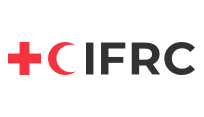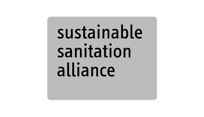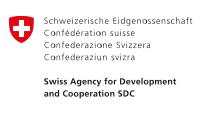Not recommended!

Open burning is the uncontrolled burning of waste in open areas. Open burning releases pollutants that are harmful to health and the environment. It is never an appropriate solution for waste management and should be rapidly discontinued.

Open burning is the intentional uncontrolled burning of waste in open areas such as backyards, vacant plots, roadsides, open dumping and disposal sites and fields or farmlands. It is also carried out in waste storage containers, pits, outdoor furnaces, woodstoves and fireplaces. Waste can start burning unintentionally from the spontaneous combustion of flammable materials or flammable gases (methane) typically found in larger accumulations of waste. Open burning refers to waste materials that burn in the presence of oxygen. The process results in incomplete waste combustion releasing a range of pollutants directly into the environment. The mix of pollutants depends on the waste composition. Possible emissions are particulate matter, dioxins, furans, black carbon and other toxic gaseous chemicals, some of which are also potent greenhouse gases. In addition to contributing to global warming, these emissions pollute the air and soil. They can create serious health issues for humans, such as respiratory problems, cancers and other chronic diseases. Despite its severe negative impacts, open burning is commonplace as it reduces the amount of accumulated waste, enables the recovery of valuable non-combustible materials from the ashes and is perceived as a cost-free, easy solution. However, the practice has severe impacts and indirect costs from the environmental degradation and health issues it causes.
Design Considerations
Open burning has no design. Its main pitfalls are its severe health hazards and environmental damage, hence open burning should be avoided. Nonetheless, the severity of its impact on human health varies depending on the location of the open burning. If residential areas are not downwind of open burning, it is sufficiently distant or there is very limited exposure of people to the smoke, then the health threat to people may be less direct or severe.
Materials
Open burning of waste is typically initiated by a person, a starter fire and dry combustible waste. Once the fire is started the waste itself is the fuel and burning can spread and continue until the material is consumed or extinguished by water/rain or a lack of oxygen. Spontaneous burning can also occur if several favourable conditions align including heat accumulation and the presence of easily combustible material and gas, especially in larger uncontrolled piles of waste such as in open dumping sites U.10.
Applicability
Open burning of waste is never an appropriate solution. Nonetheless, it might be used as a temporary measure in the early stages of an emergency response. However, humanitarian and development actors should always quickly plan for safer disposal options such as controlled waste pits U.8 and controlled disposal sites/landfills U.9. If open burning takes place, it must be very short term and temporary and phased out as quickly as possible. Open burning is an indicator of poor and unsafe waste management.
Operation and Maintenance
There is no operation and maintenance for open burning.
Health and Safety
The open burning of waste has health implications, due to the release of toxic pollutants. These pollutants may include particulate matter which can penetrate deep into the lungs, causing respiratory problems such as aggravated asthma, bronchitis and reduced lung function. Polycyclic aromatic hydrocarbons, formed during the incomplete combustion of organic materials, are carcinogenic. Dioxins and furans can be released, especially when burning plastics; they pose a significant risk by causing reproductive and developmental problems, damaging the immune system and increasing cancer risk. These persistent chemicals can settle on the soil, contaminating fields and food sources. Burning materials that contain metals like copper, iron, chromium and aluminium can catalyse the formation of persistent organic pollutants, especially dioxins and furans. Uncontrolled burning of household waste causes an extra 270,000 premature deaths every year around the world. Even if the burning takes place away from the population, reducing the health hazards, there are climate impacts. The open burning of waste leads to emissions of black carbon, estimated to have a 20-year Global Warming Potential of 4,470 compared to one unit of CO2. Globally, the release of methane and black carbon (in smoke) from uncontrolled dumpsites is accelerating climate change X.8.
Costs
Open burning is perceived as a simple, low-cost approach because it does not rely on equipment or infrastructure. However, costs can quickly escalate if fires spread. The cost is also high when indirect external costs are considered, such as the social impact, ill health, climate change, damage to livestock and wildlife and loss of business and tourism. The overall economic cost to society from improper waste management practices, such as open dumping U.10, open burning and inadequate resource recovery, is estimated to be five to ten times higher than the financial cost of proper waste management.
Social Considerations
Emissions from open burning significantly impact vulnerable populations, including children, the elderly and people with health problems. The intentional burning of waste to recover materials of value may be a livelihood strategy but its risks and health impacts outweigh the short-term economic benefits. Open burning is a common practice in low-income and marginalised communities due to poor waste management services and infrastructure, raising concerns about environmental justice. Although banned and illegal in many countries, it is often tolerated by service providers as it ’removes’ waste; enforcing a waste-burning ban is therefore difficult. Sometimes waste is even burned as fuel in stoves which has a direct health impact, especially if plastics are included. Many are unaware of the associated severe health and environmental risks, highlighting the need for education and greater awareness. Open burning at disposal sites disproportionately affects vulnerable groups in the vicinity who may work with the waste, live close by or lack the means to oppose it. Addressing these issues requires better waste management and community education.
Key Decision Criteria
Input Products
Mixed Waste
Response Phase
Application Level
Management Level
Space Required
low
Technical Complexity
low
Objectives & Key Features
Undesirable way of getting rid of waste
Strength & Weakness
- No strengths
- Contributes to air pollution and climate change, severely impacts the health of the affected population and leads to long-term environmental degradation
- Can lead to the spread of fires, endangering lives and habitats
- Has highest impact when near residential areas and indoors






